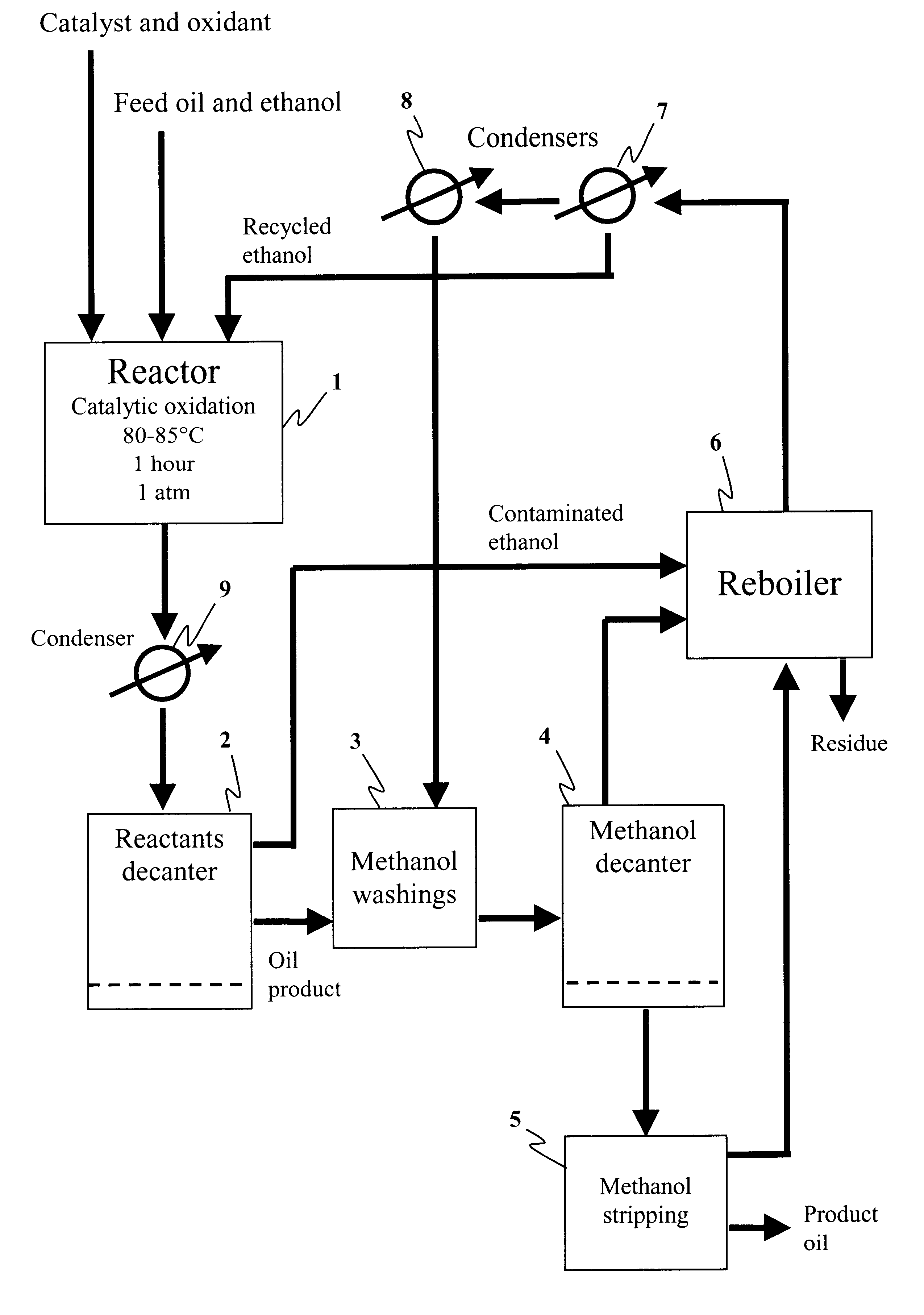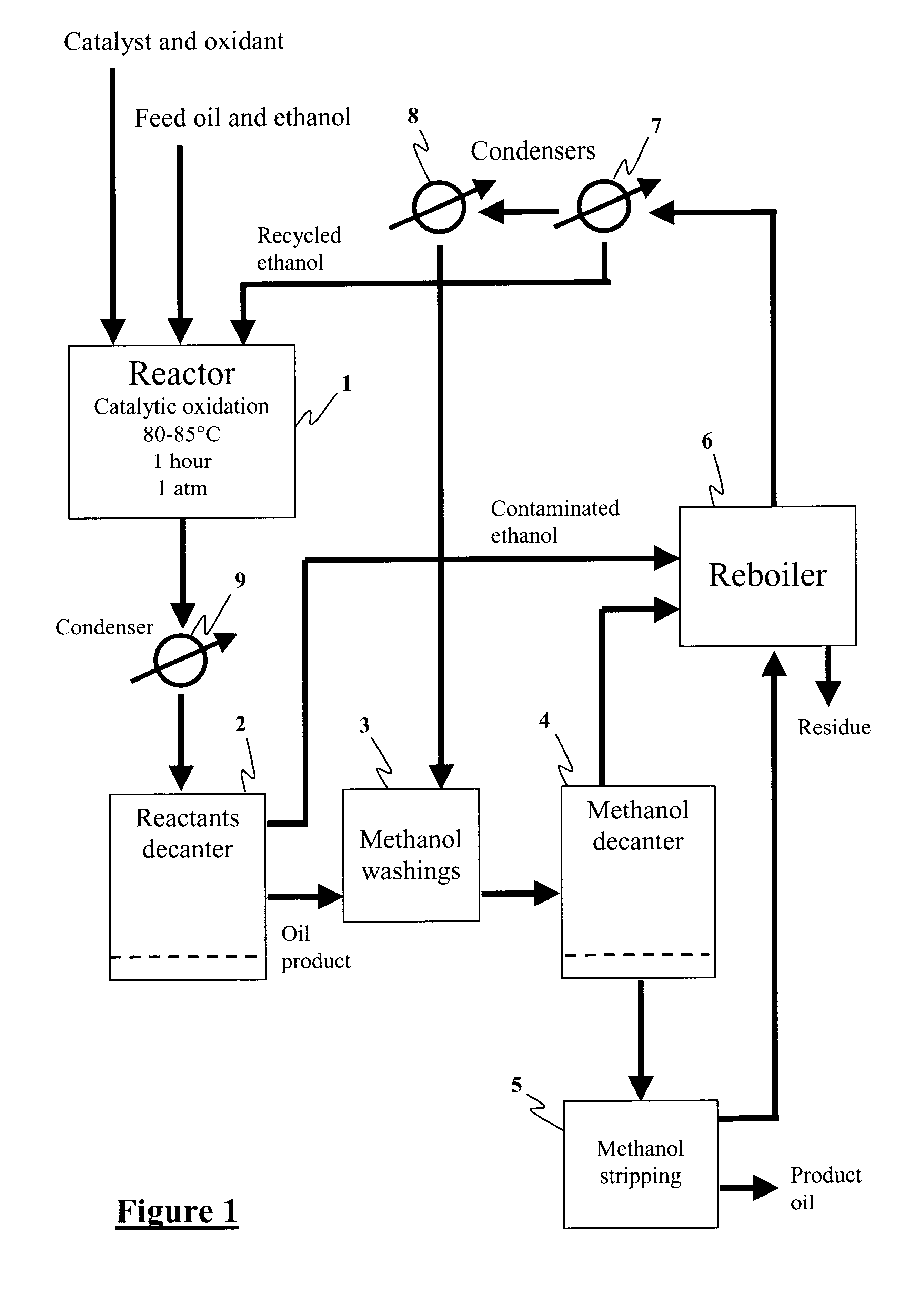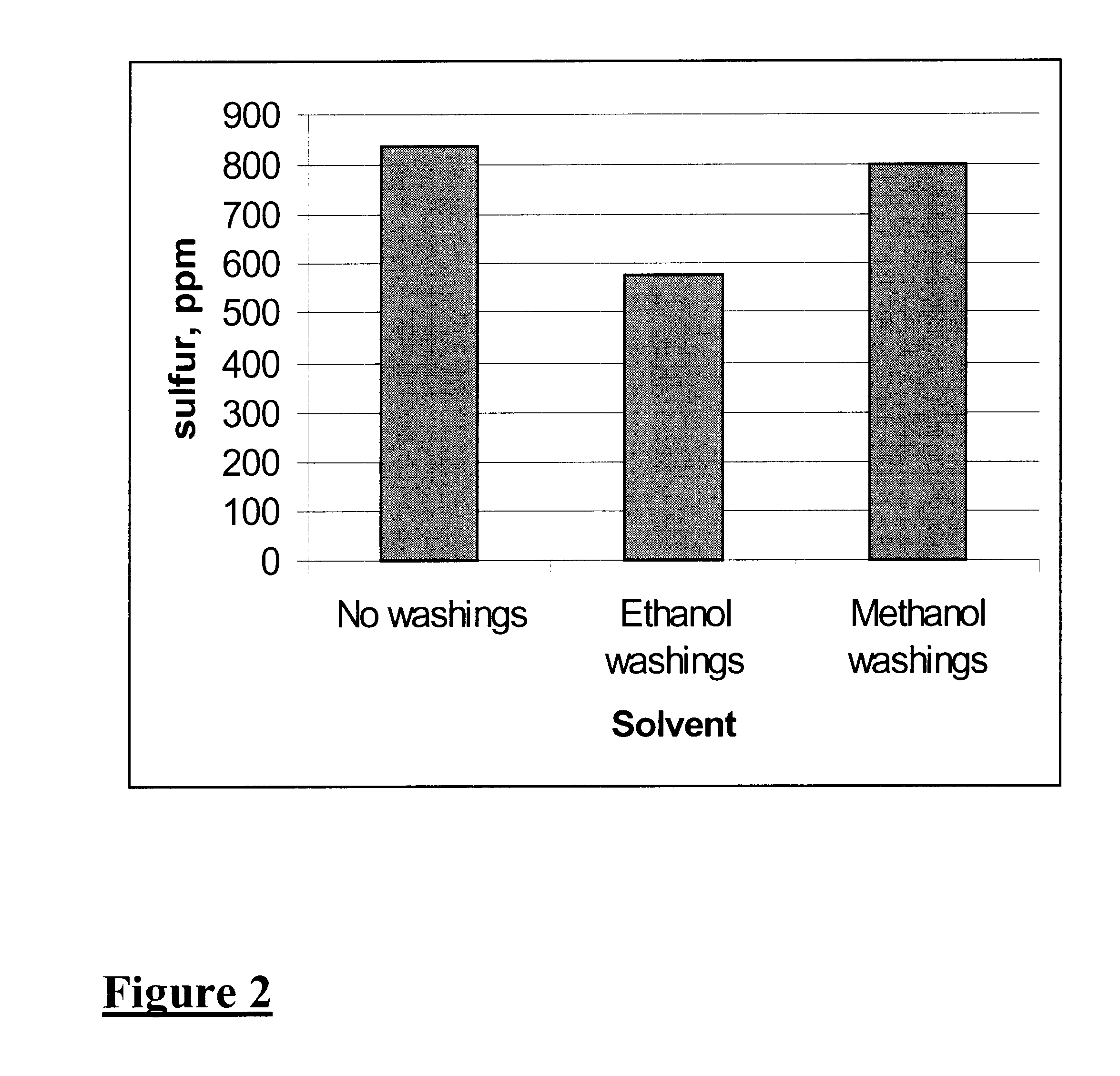Method for the production of hydrocarbon fuels with ultra-low sulfur content
a hydrocarbon fuel and ultra-low sulfur content technology, applied in the direction of hydrocarbon oil treatment, catalytic naphtha reforming, naphtha reforming, etc., can solve the problems of increasing the production cost of fuels to levels that are not economically viable, sulfur concentrations less than 100 ppm are generally unobtainable, and sterically hindered sulfur compounds are not amenable to extraction by such techniques
- Summary
- Abstract
- Description
- Claims
- Application Information
AI Technical Summary
Benefits of technology
Problems solved by technology
Method used
Image
Examples
example 2
An oil, diesel type, obtained by thermal cracking of used lubrication oil, containing 1289 ppm S (Oil A) was mixed with MeOH at 2:1 ratio. A soluble V catalyst, V(AcAc).sub.3 was added to the previous mixture to have a concentration of 0.05 wt %. The resulting mixture was heated to 40-50.degree. C. and treated with 1.2% H.sub.2 O.sub.2 at 30 wt %. The heating was increased to reflux and continued for 1 h. The mixture was allowed to separate into two phases and the lower phase was washed with MeOH, oil:MeOH=2:1. The S in oil was reduced to 820 ppm.
example 3
Middle distillate oil, diesel type, obtained by thermal cracking of used lubrication oil, containing 1289 ppm S (Oil A) was mixed with EtOH at wt. ratio of 2:1. A soluble V catalyst, V(AcAc).sub.3 was added to the previous mixture to a concentration of 0.05 wt %. The resulting mixture was heated to 40-50.degree. C. and treated with 1.2% H.sub.2 O.sub.2 at 30 wt %. The heating was increased to reflux and continued for 1 h. The mixture was allowed to separate into two phases and the lower phase was washed with EtOH, oil:EtOH=2:1. The S in the washed oil was 580 ppm.
example 4
An oil, diesel type, containing 150 ppm S was mixed with ethanol at a wt. ratio of 2:1. A soluble V catalyst, V(AcAc).sub.3 was added to the previous mixture to have a concentration of 0.05 wt %. The resulting mixture was heated to 40-50.degree. C. and treated with 1.0% H.sub.2 O.sub.2 at 30 wt %. The heating was increased to reflux and continued for 1 h. The mixture was allowed to separate into two phases and the lower phase was washed with MeOH, oil:MeOH=2:1. The S in the washed oil was 48 ppm.
PUM
| Property | Measurement | Unit |
|---|---|---|
| temperature | aaaaa | aaaaa |
| temperature | aaaaa | aaaaa |
| wt % | aaaaa | aaaaa |
Abstract
Description
Claims
Application Information
 Login to View More
Login to View More - R&D
- Intellectual Property
- Life Sciences
- Materials
- Tech Scout
- Unparalleled Data Quality
- Higher Quality Content
- 60% Fewer Hallucinations
Browse by: Latest US Patents, China's latest patents, Technical Efficacy Thesaurus, Application Domain, Technology Topic, Popular Technical Reports.
© 2025 PatSnap. All rights reserved.Legal|Privacy policy|Modern Slavery Act Transparency Statement|Sitemap|About US| Contact US: help@patsnap.com



